Korean Kamov Ka-32T Fire-Fighting Water Impact and Underwater Egress Fatal Accident (KFS HL9419)
On 1 December 2018, Korea Forest Service (KFS) Aviation Headquarters Kamov Ka-32T HL9419 impacted the Han River in Seoul, South Korea during an approach to uplift water for fire-fighting operations. An aircrewman was killed but the two pilots escaped with minor injuries.
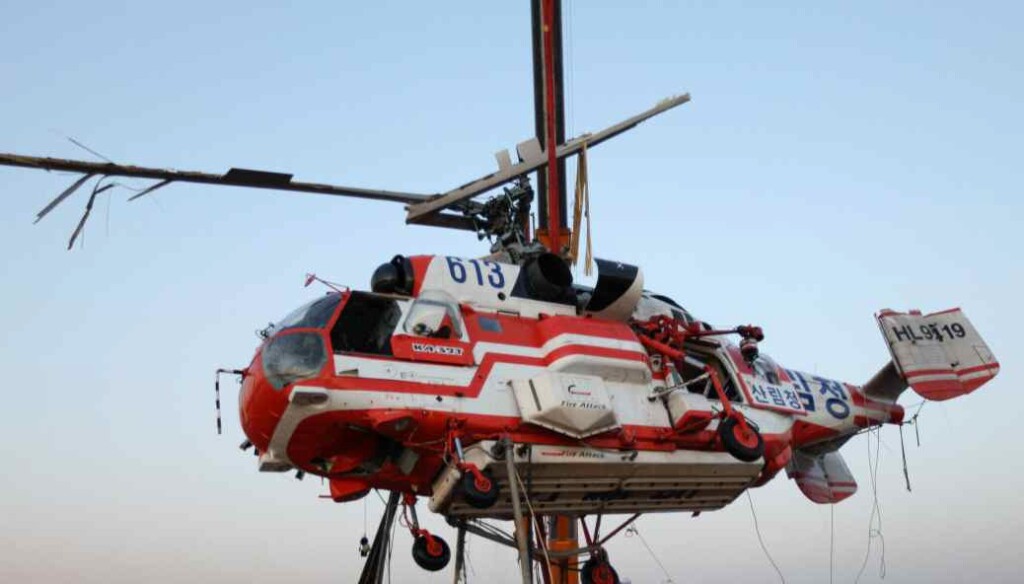
Wreckage of Korea Forest Service (KFS) Kamov Ka-32T HL9419 Being Recovered after Water Impact (Credit: ARAIB)
The 80-page Korean Aviation and Railway Accident Investigation Board (ARAIB) safety investigation report was published on 28 December 2020 (in Korean only).
The Accident Flight
The 11 t helicopter, based at Gimpo Airport on 15 minute stand-by, was equipped with a Simplex Model 326 Fire Attack 2972 litre external tank and dual snorkel system. It was tasked to put out a fire on Mount Youngchuk in eastern Seoul. The fire was reported at 10:42 and the helicopter was airborne at 10:55, arriving over the fire at 11:08. The fire was at the edge of the outer Seoul P-73B prohibited airspace. Tracer is authorised as a warning to unauthorised aircraft in P-73B whereas lethal force is authorised in P-73A. This therefore also required liaison with the RoKAF Master Control and Reporting Center (MCRC).
The crew were unable to identify a small reservoir, suggested by their control room, near Sahmyook University at 11.11. They then tried a site at Wangsukcheon at 11.15 but the water level was too low for the snorkels to work successfully.

Route of of Korea Forest Service (KFS) Kamov Ka-32T HL9419 Being Prior to Han River Water Impact (Credit: ARAIB)
The commander decided to proceed to the Han River, near the Gangdong Bridge. Visibility was good (>10 km), the wind was from the south-east at 2-3kts, and air temperature 7-8℃.
ARAIB explain that the KFS procedure for a water uplift is first to conduct a high and low level reconnaissance. This was not done, nor was there a briefing prior to the approach.
The KFS approach procedure is to pass through 100 ft at 50 km/h (25 knots) and at a decent rate below 2 m/s (400 fpm), as shown in this video.
The rate of descent during this approach was however 5.7 m/s (1120 fpm) at 100ft and although the rate of descent slowed, impact was still at 3.2 m/s (630 fpm).
The commander (5006 hours total time and 1182 on type) was Pilot Flying (PF) and the co-pilot (2223 hours total time and 1182 on type) was Pilot Monitoring (PM). However, investigators say that both flight crew were concentrating on radio communications, so they failed to recognise the excessive descent rate and proximity to the river’s surface. The radalt low height warning was set at 20 m and triggered 6 seconds before impact.
Underwater Escape – Survivability Issues
The aircraft was not equipped with an Emergency Flotation System (EFS). All the crew had completed Helicopter Underwater Escape Training (HUET). They were issued Switlik life jackets and had a 3000 psi HEED3 Compressed Air Emergency Breathing System (CA-EBS).
Both pilots were unable to activate their door release and both escaped through the right-hand bubble window that had been smashed by the right-hand mirror that was twisted backwards on impact. The c0-pilot initially struggled to release his harness, used his HEED bottle and escaped ‘towards the light’.
The investigators confirmed that scheduled maintenance jettison tests had been conducted previously and successfully passed within the activation force requirements. The ARAIB postulate that after the water impact the crew may have been confused at how the emergency door mechanism worked. The KA-32T does not seem to be equipped with push out windows, as is the norm for offshore helicopters to aid underwater escape.

KFS Kamov Ka-32T HL9419 Pilots Egressed Through the Damaged Right-hand Bubble Window after Water Impact (Credit: ARAIB)
The Seoul Fire Department were notified within 1 minute of the accident. The helicopter came to rest at a 45º angle, nose down in 5.8 m deep water.
The commander, who escaped with neither life jacket nor HEED bottle swam to shore and was rescued by firefighters. He initially claimed he had removed them to help swim, but they were later found on his office desk…
The co-pilot inflated his life jacket and remained with the wreckage and was rescued by a police boat.
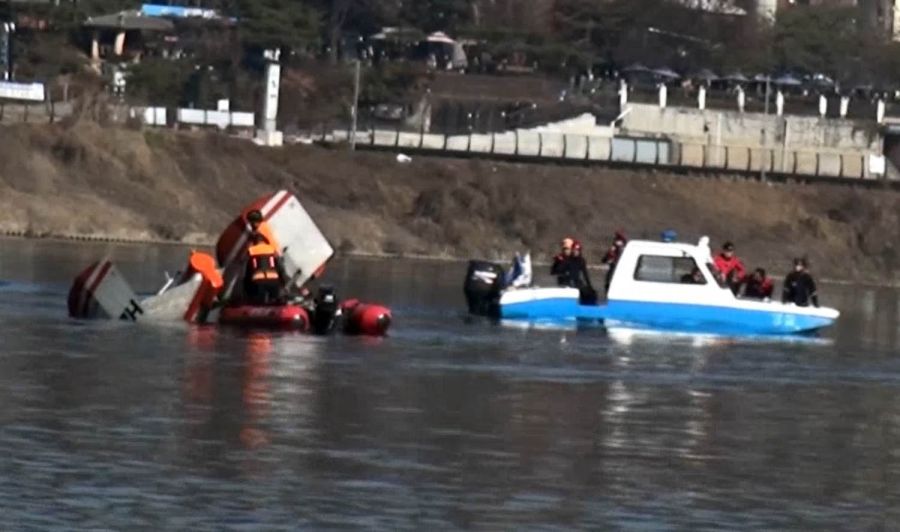
Wreckage of Korea Forest Service (KFS) Kamov Ka-32T HL9419 In The Han River (Credit: Gangdong Fire Station)
The aircrewman failed to escape, though his HEEDS3 bottle was found in the wreckage with a pressure of 400 psi, implying it had been used. There was no sign of a door handle being activated. His unconscious body was recovered by fire service divers about 40 minutes after the accident. They noted that underwater visibility was <1.5 m.

Wreckage of Korea Forest Service (KFS) Kamov Ka-32T HL9419 Being Recovered after Water Impact (Credit: ARAIB)
ARAIB Conclusions
During the descent approach, the flight crew concentrated on the radio calls, so they failed to recognise excessive descent speed and proximity to the surface.
They determined that the following were contributing factors:
1. Water uplift procedures such as location selection of water sources, high-altitude and low-altitude reconnaissance and stabilised flight were not implemented.
2. During the approach, the assignment of duties was not clearly implemented, with both flight crew focused on radio communication.
3. Failure to monitor information provided by the aircraft, such as low altitude warning and radio altimeter.
4. The crew’s emergency exit door opening method and escape training response capability were insufficient.
Safety Resources: Ditching, Water Impact, Survivability etc
- NH90 Caribbean Loss of Control – Inflight, Water Impact and Survivability Issues
- Dramatic Malaysian S-76C 2013 Ditching Video
- AAIB Report on 2013 Sumburgh G-WNSB AS332L2 Helicopter Accident
- Fatal Mi-8 Loss of Control – Inflight and Water Impact off Svalbard
- Canadian Coast Guard Helicopter Accident: CFIT, Survivability and More
- Night Offshore Winching CFIT
- Helicopter Ditching – EASA Rule Making Team RMT.0120 Update
- NTSB Report on Bizarre 2012 US S-76B Ditching
- AAIB Report on the Ditchings of EC225 G-REDW 10 May 2012 & G-CHCN 22 Oct 2012
- SAR Helicopter Loss of Control at Night: ATSB Report
- CAP1145 Helicopter Water Impact Survivability Statistics – A Critique
- UK BOSIET/FOET Cat-A EBS HUET Update
- NTSB Investigation into AW139 Bahamas Night Take Off Accident
- SAR Questions Feature in PNG AIC B427 Accident Investigation
- Pilatus PC-12 Pacific Ditching
- UPDATE 9 Dec 2023: Fire-fighting Bell 204B Underwater Escape
Safety Resources: Fire-Fighting etc
- Competitive Behaviour’ and a Fire-Fighting Aircraft Stall
- Short Sling Stings Speedy Squirrel: Tail Rotor Strike Fire-Fighting in Réunion
- Wayward Window: Fatal Loss of a Fire-Fighting Helicopter in NZ
- Helicopter Tail Rotor Strike from Firefighting Bucket
- Maintenance Issues in Fire-Fighting S-61A Accident
- Load Lost Due to Misrigged Under Slung Load Control Cable
- Firefighting Helicopter Wire Strike
- Fire-Fighting AS350 Hydraulics Accident: Dormant Miswiring
- Beware Last Minute Changes in Plan
- UPDATE 16 January 2021: NZ Firefighting AS350 Accident: Weaknesses in Role Equipment Design and Distribution of Key Operating Data
- UPDATE 29 January 2021: BK117 Impacts Sea, Scud Running off PNG
- UPDATE 24 April 2021: Unballasted Sling Stings Speedy Squirrel
- UPDATE 21 May 2021: Firefighting AW139 Loss of Control and Tree Impact
- UPDATE 16 October 2021: South Korean Fire-Fighting Helicopter Tail Rotor Strike on Fuel Bowser
- UPDATE 17 February 2024: Night Offshore Take-Off Loss of Control Incident
- UPDATE 18 February 2024: Night Offshore Helicopter Approach Water Impact
Other Safety Resources
The European Safety Promotion Network Rotorcraft (ESPN-R) has a helicopter safety discussion group on LinkedIn.
UPDATE 16 January 2021: UK CAA have issued this infographic on distraction:
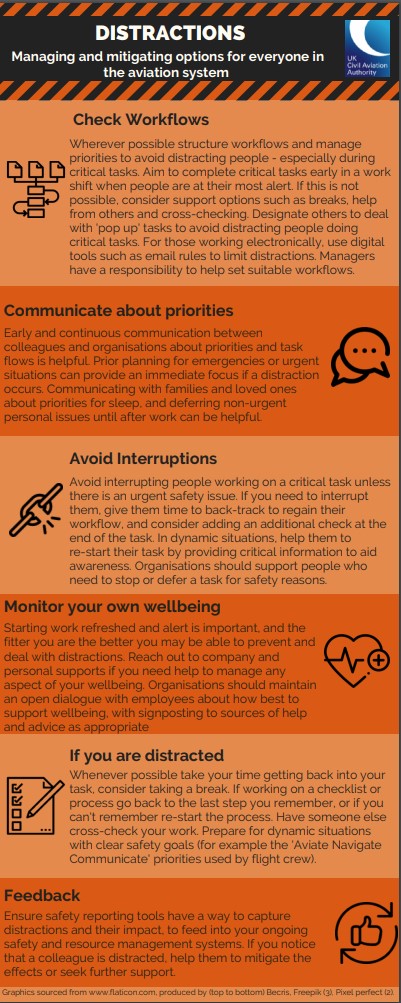

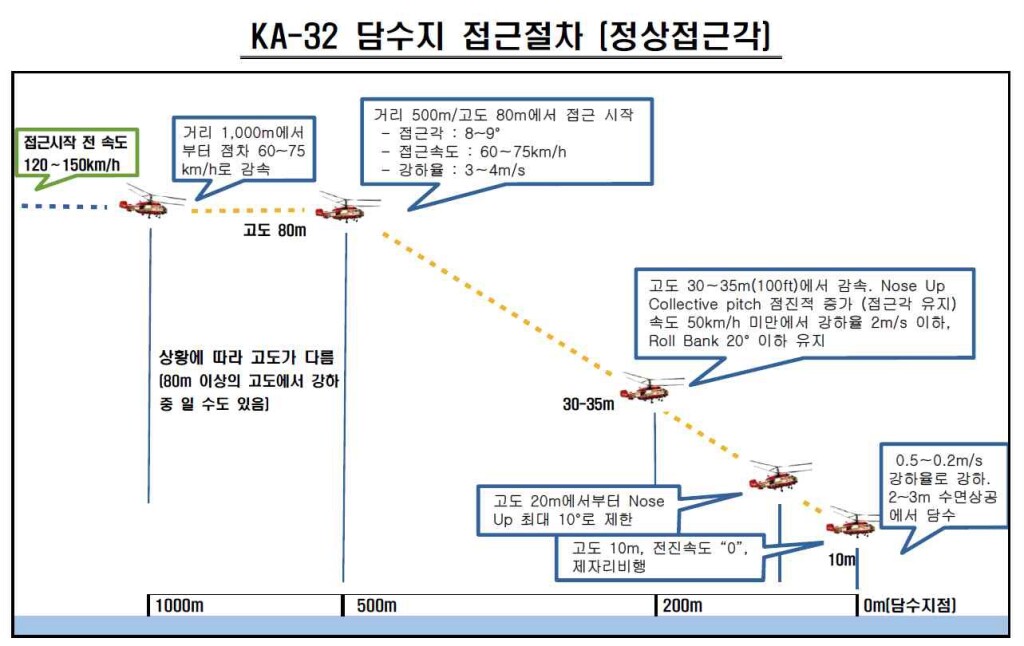


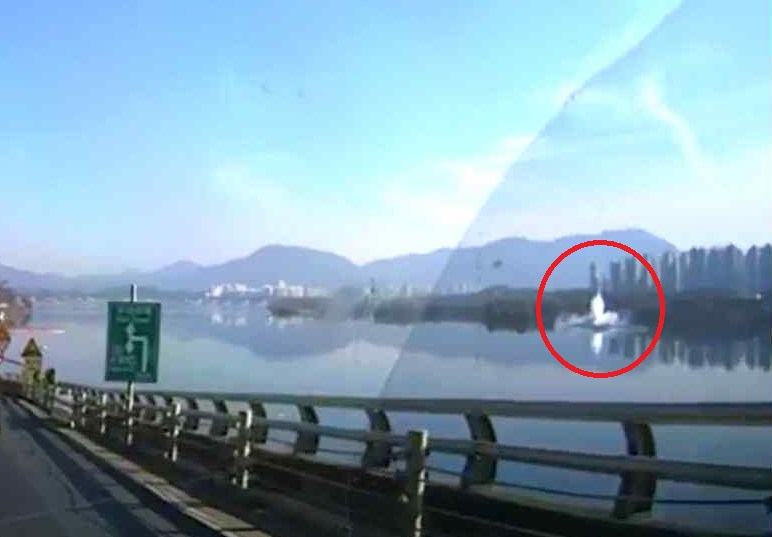

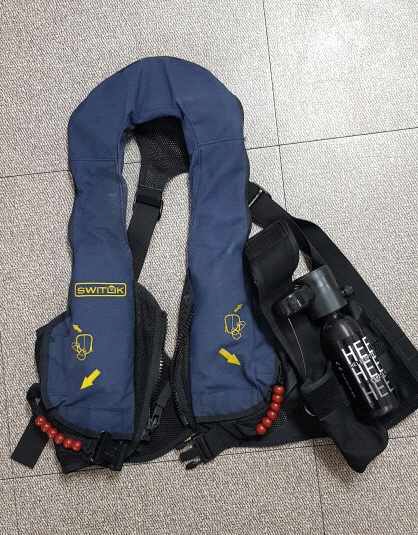

Recent Comments